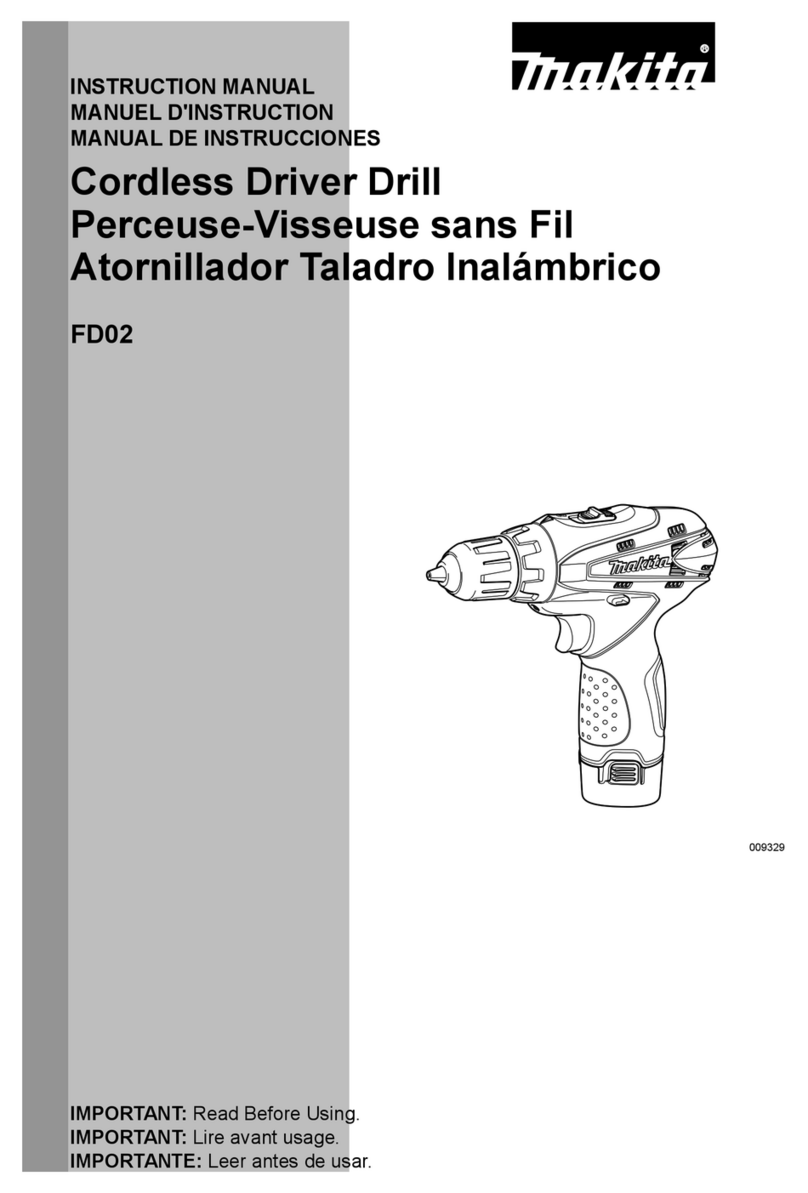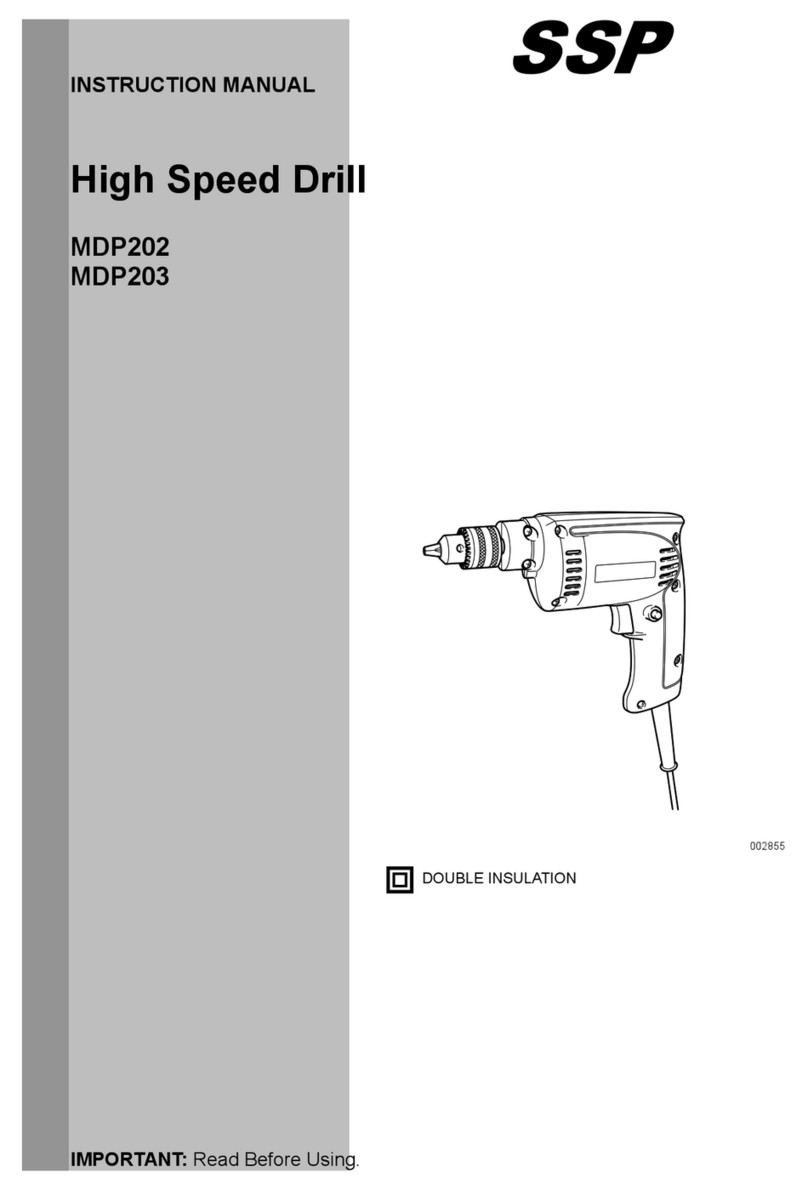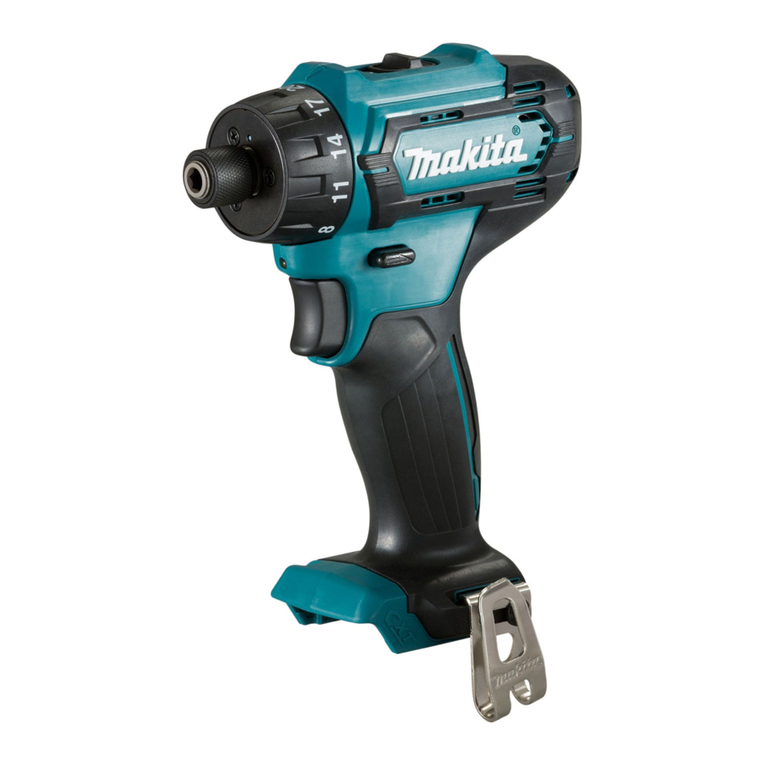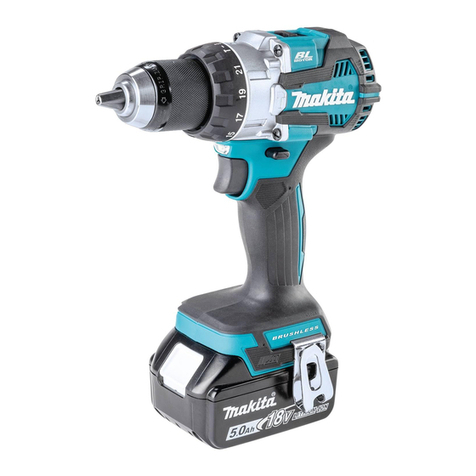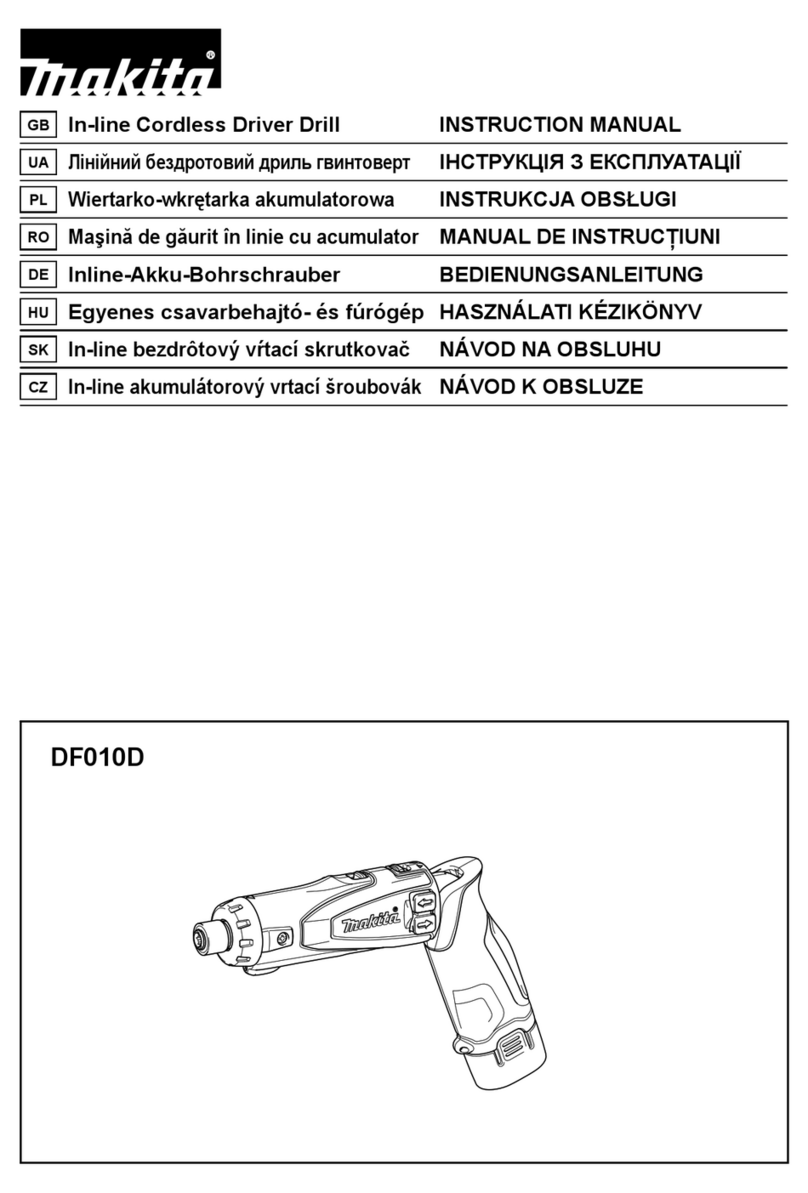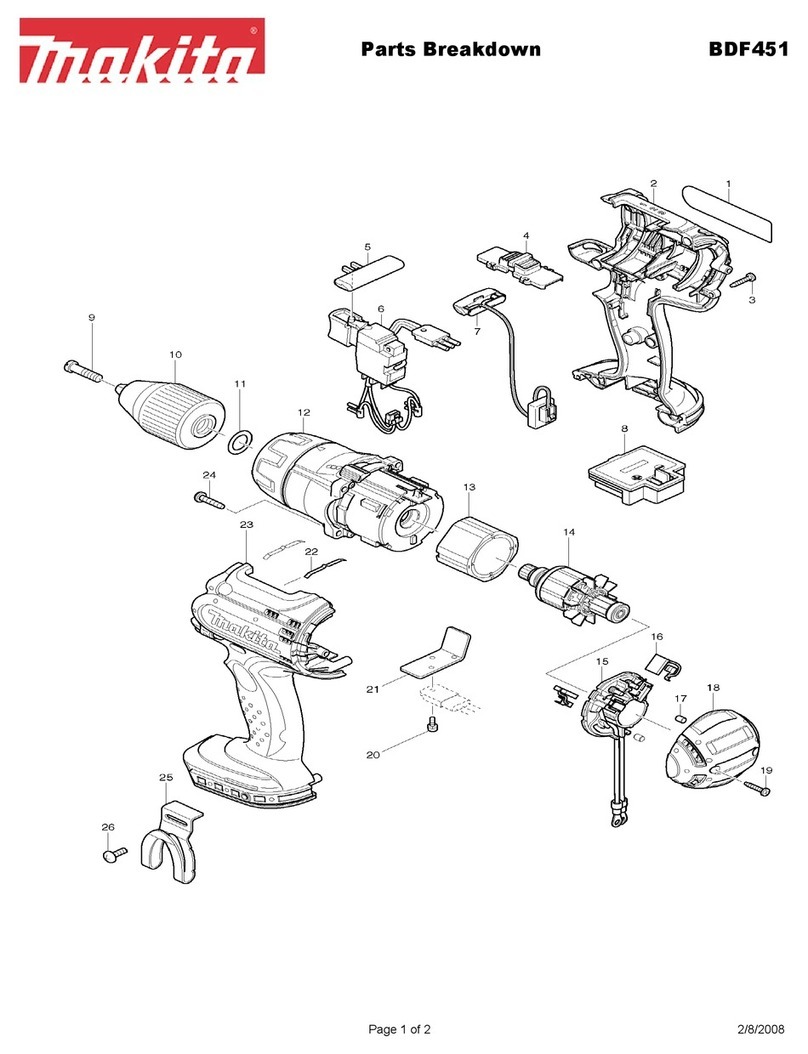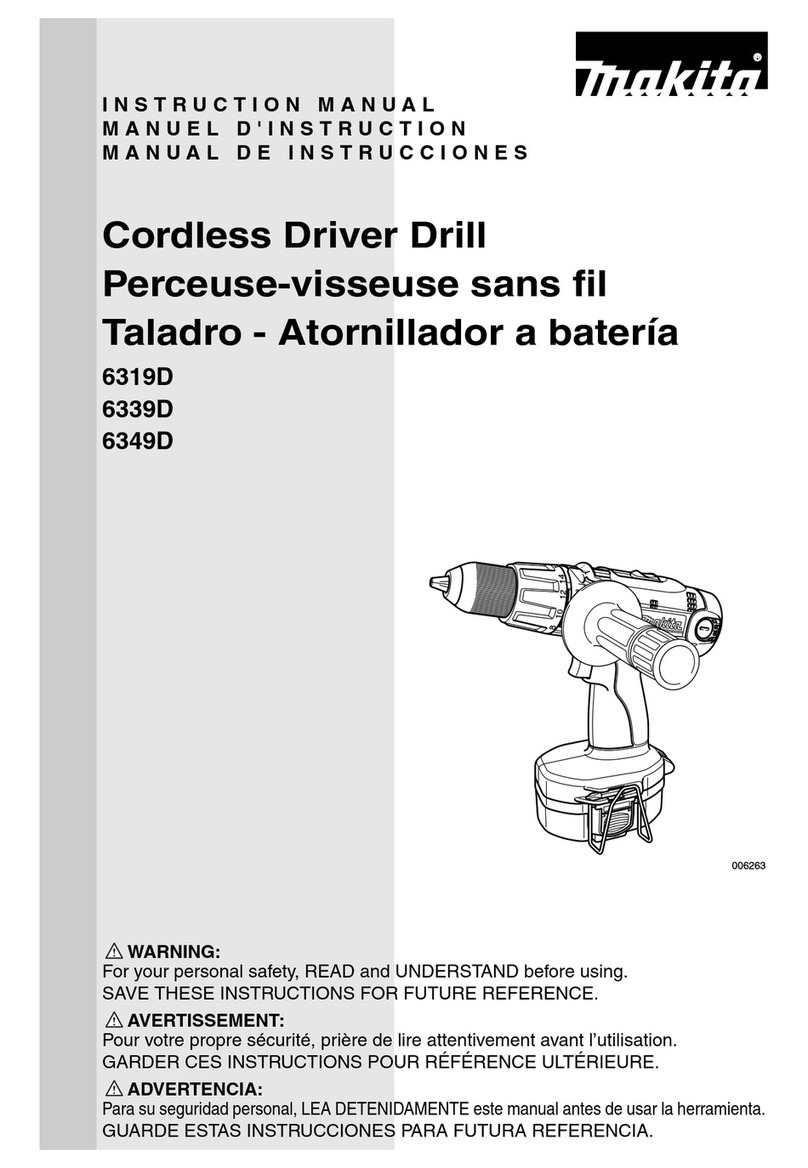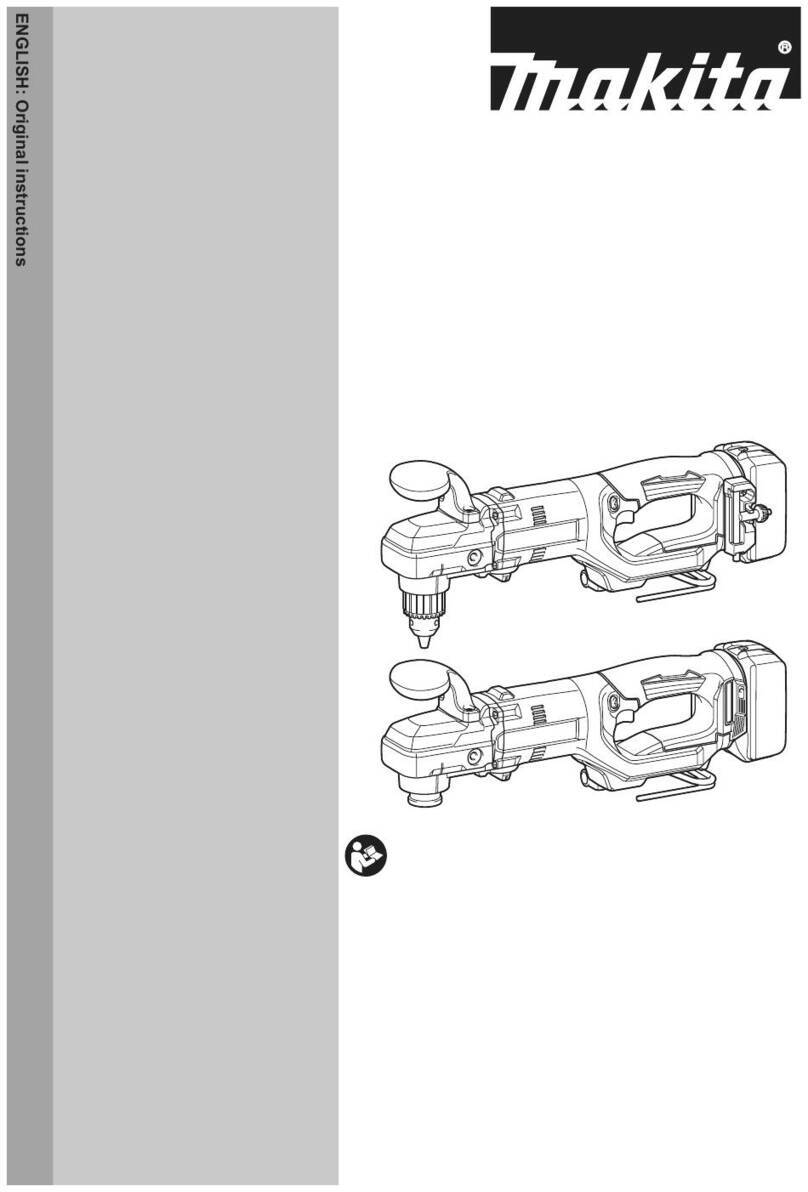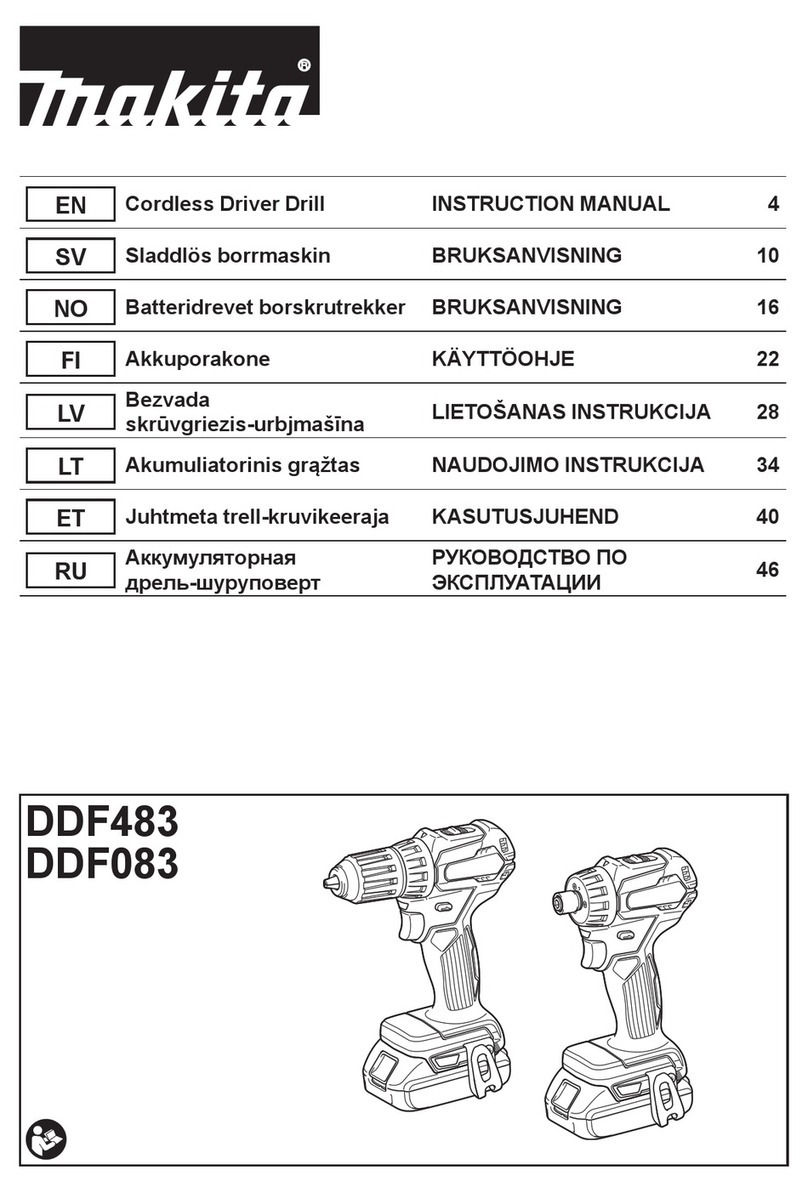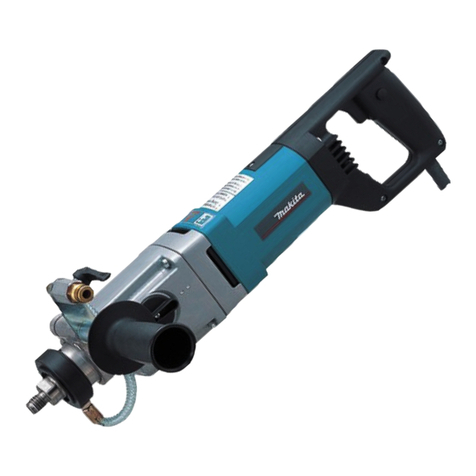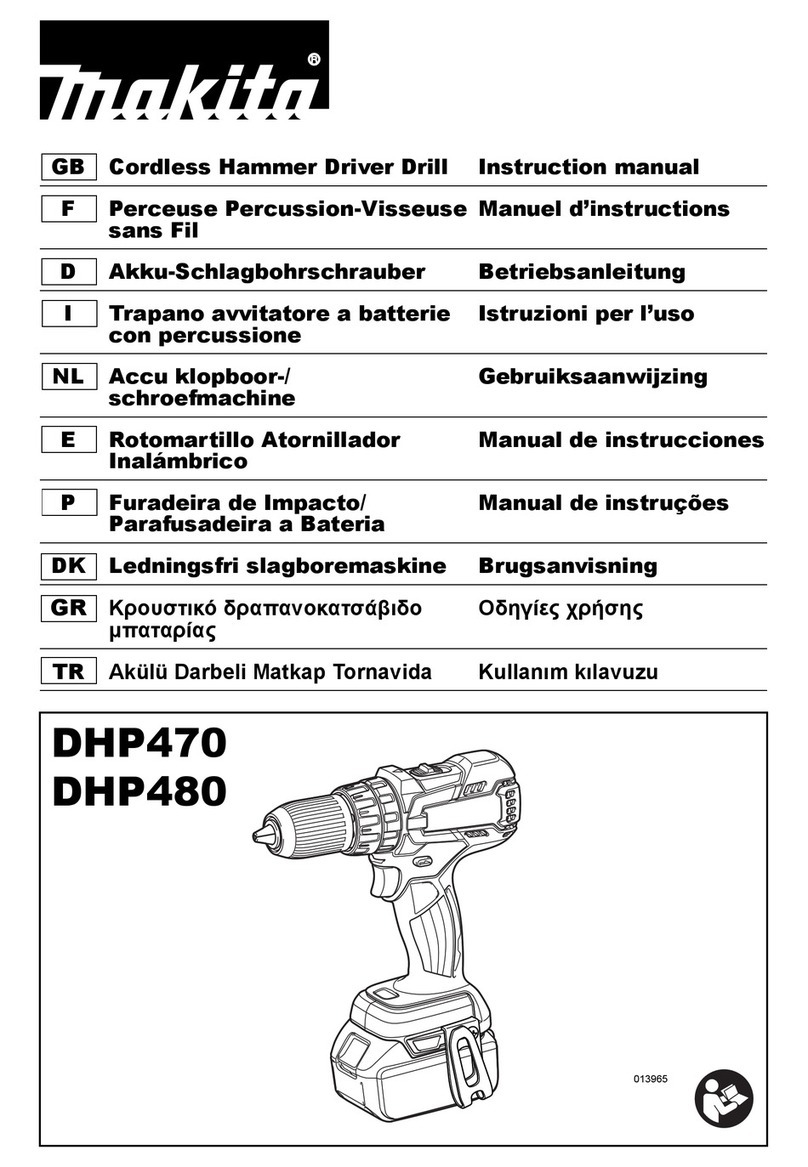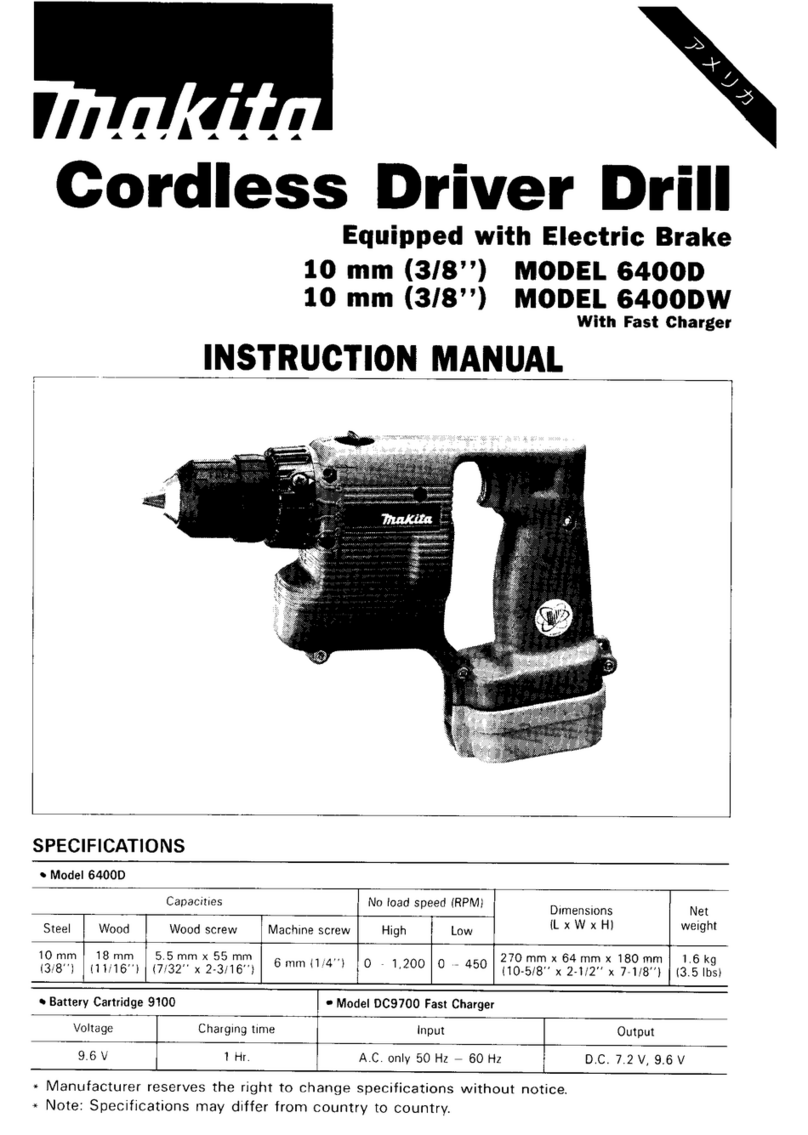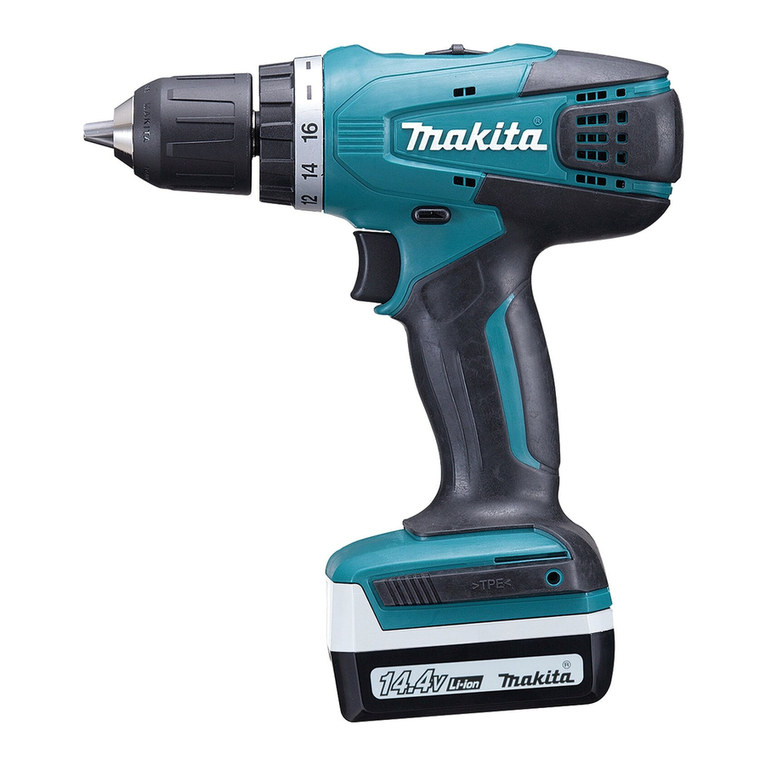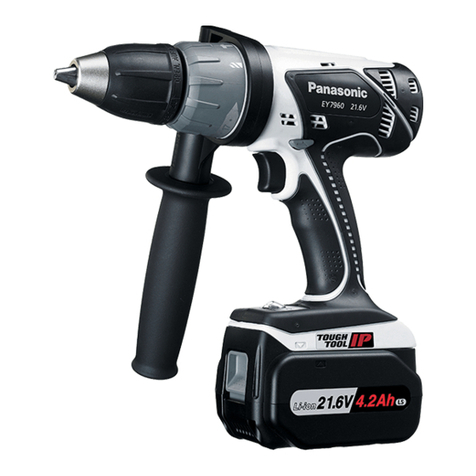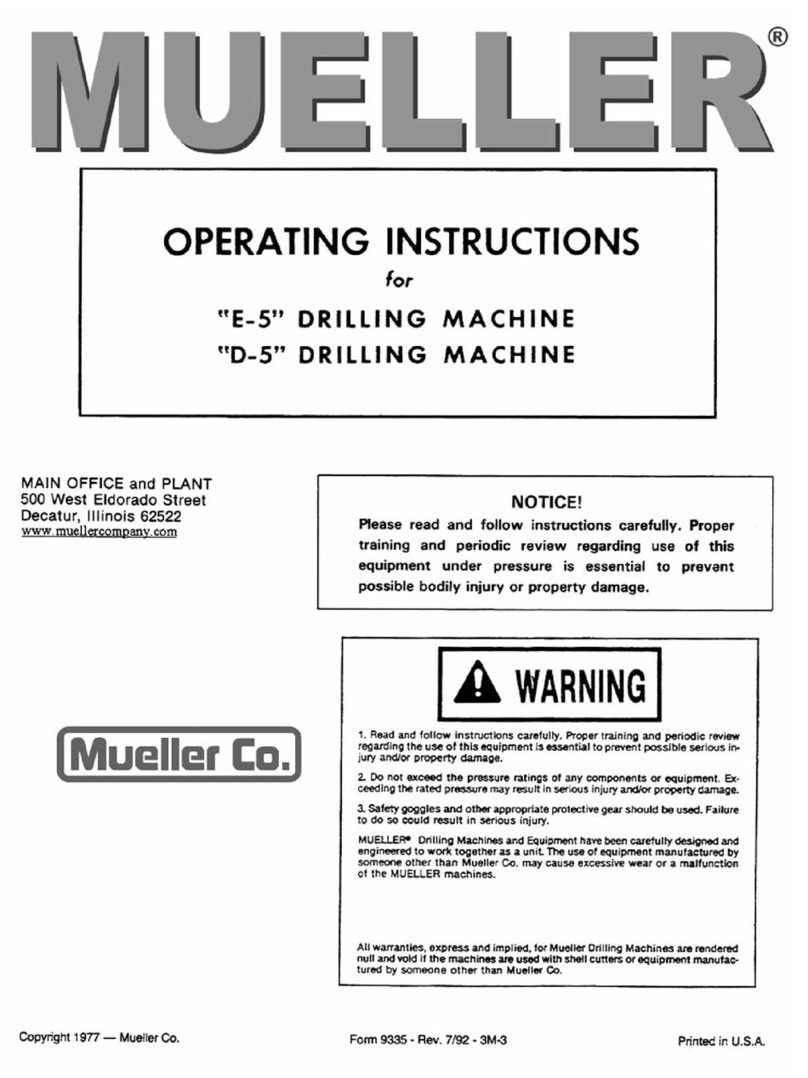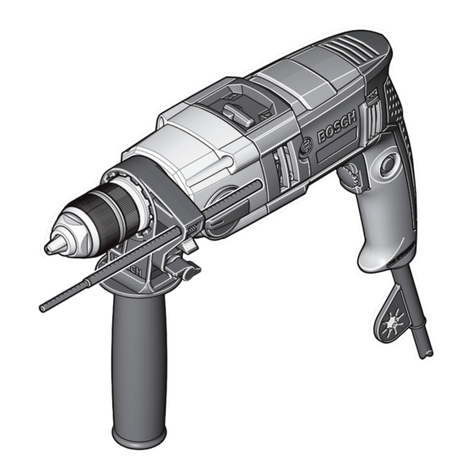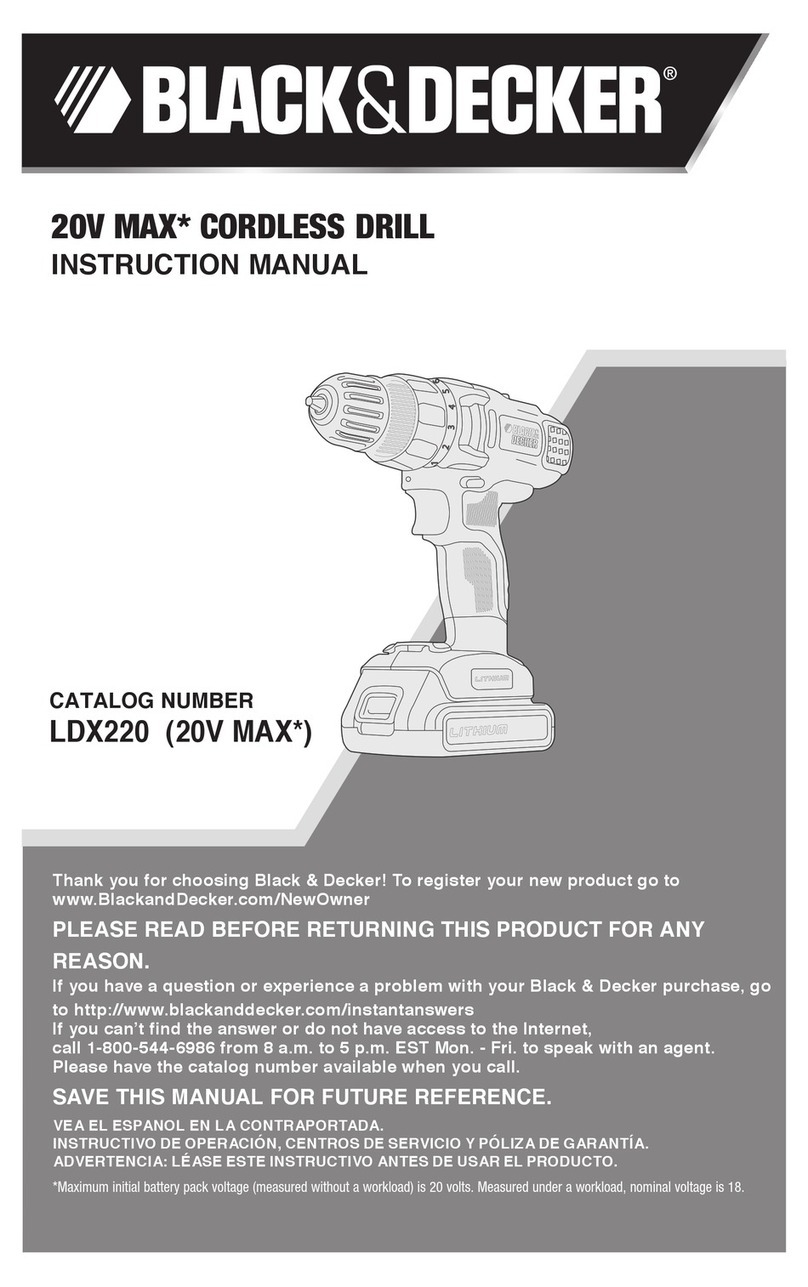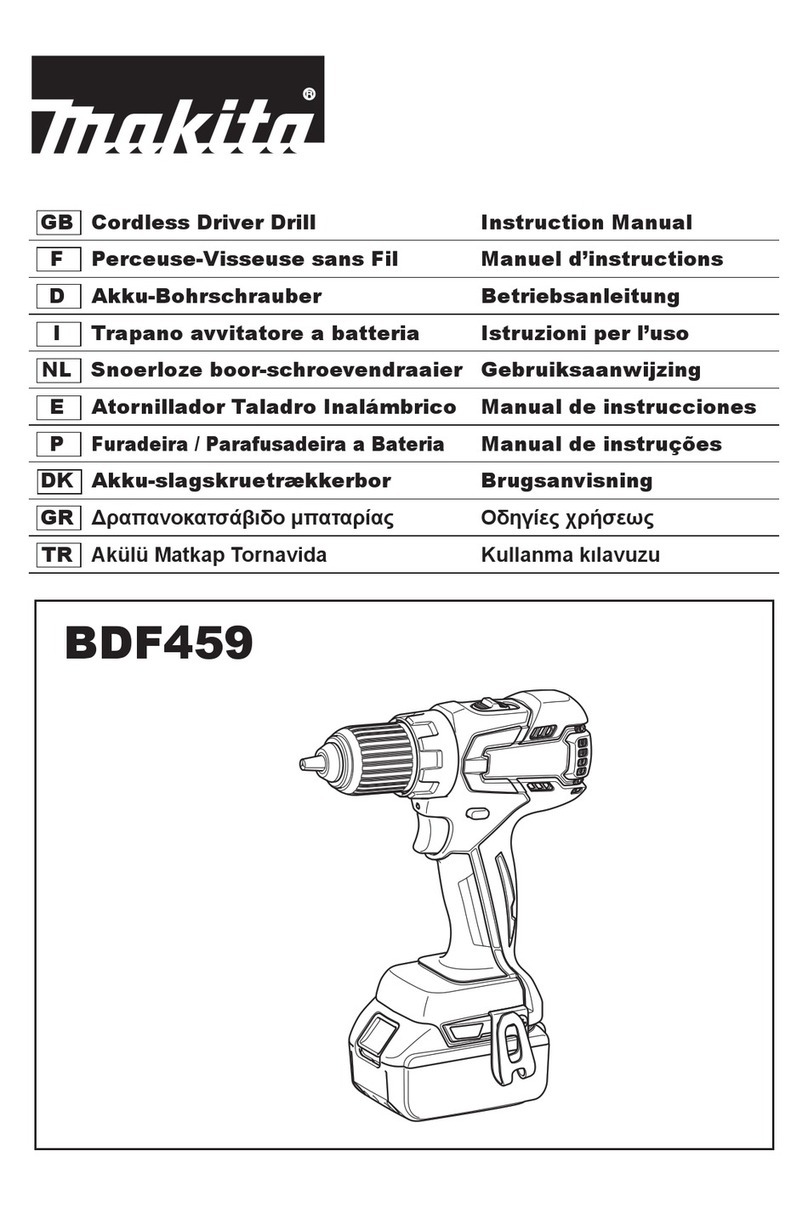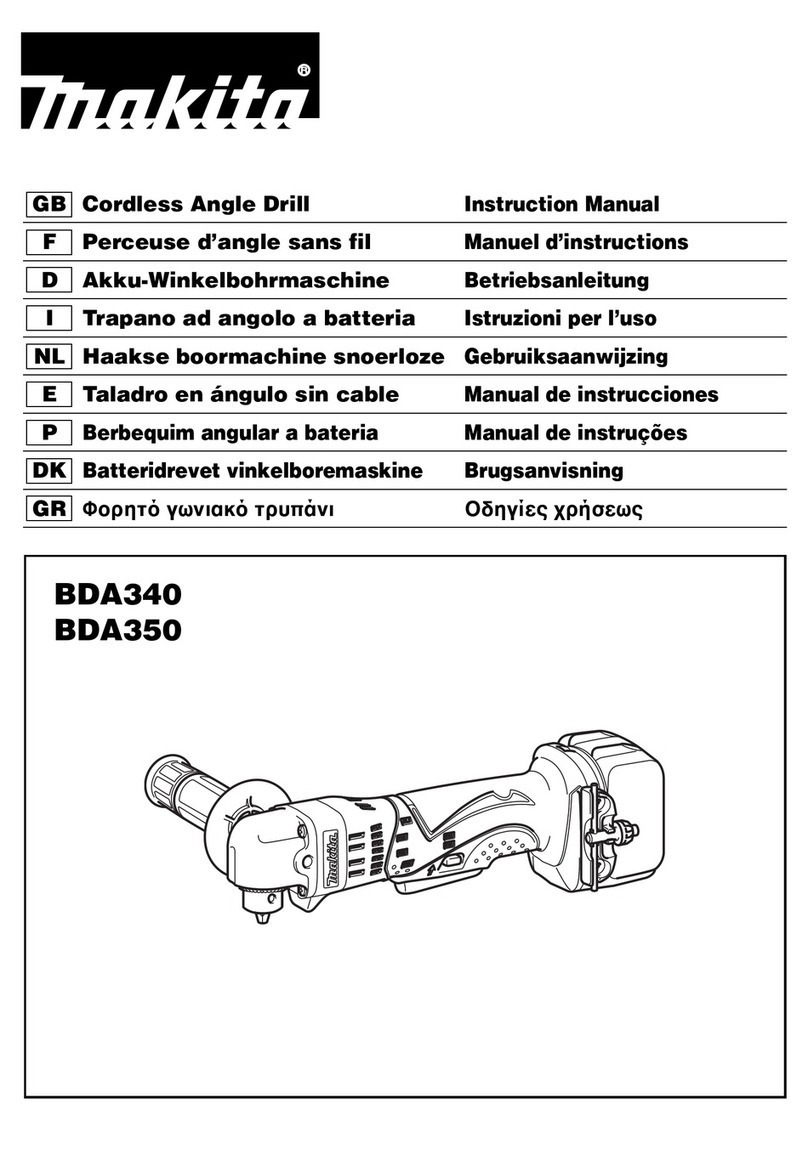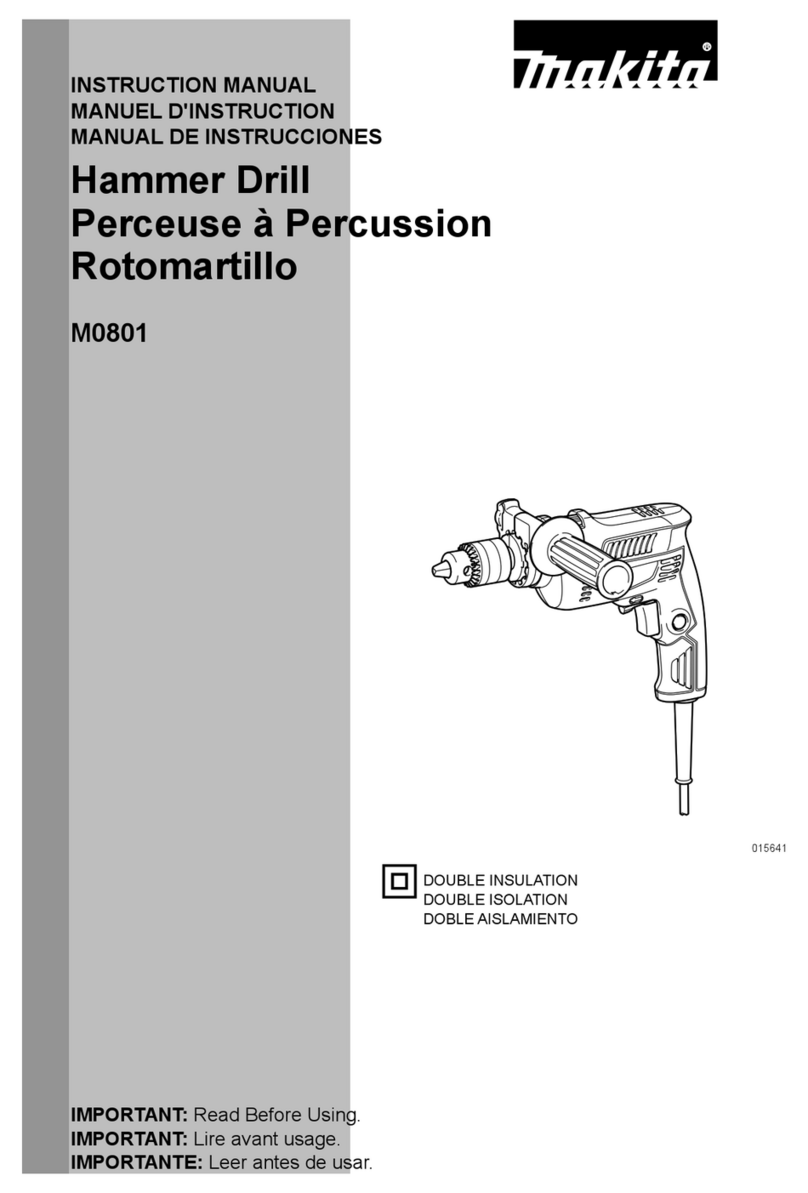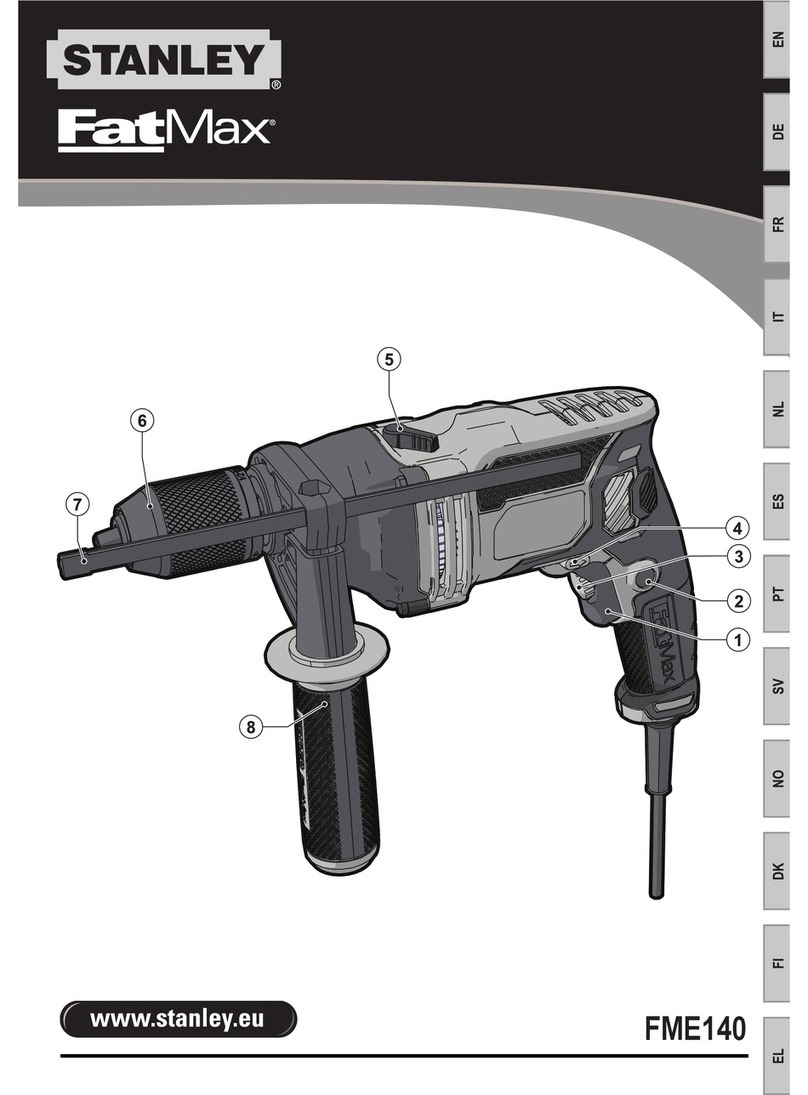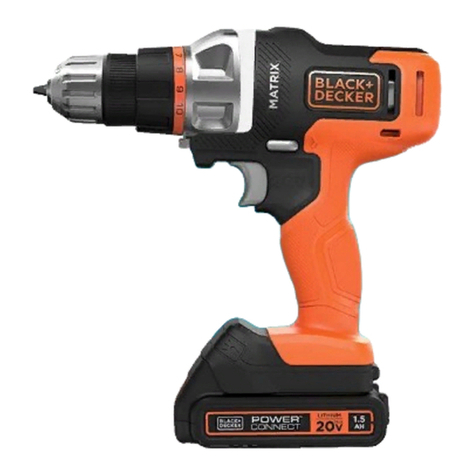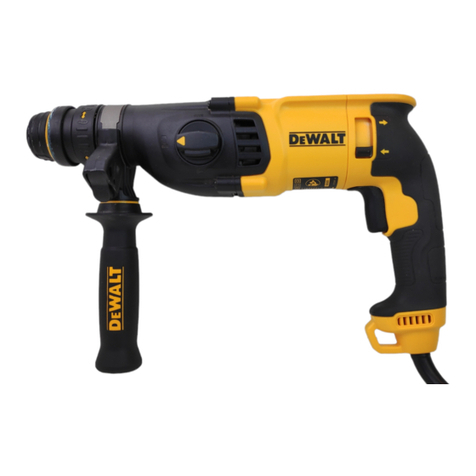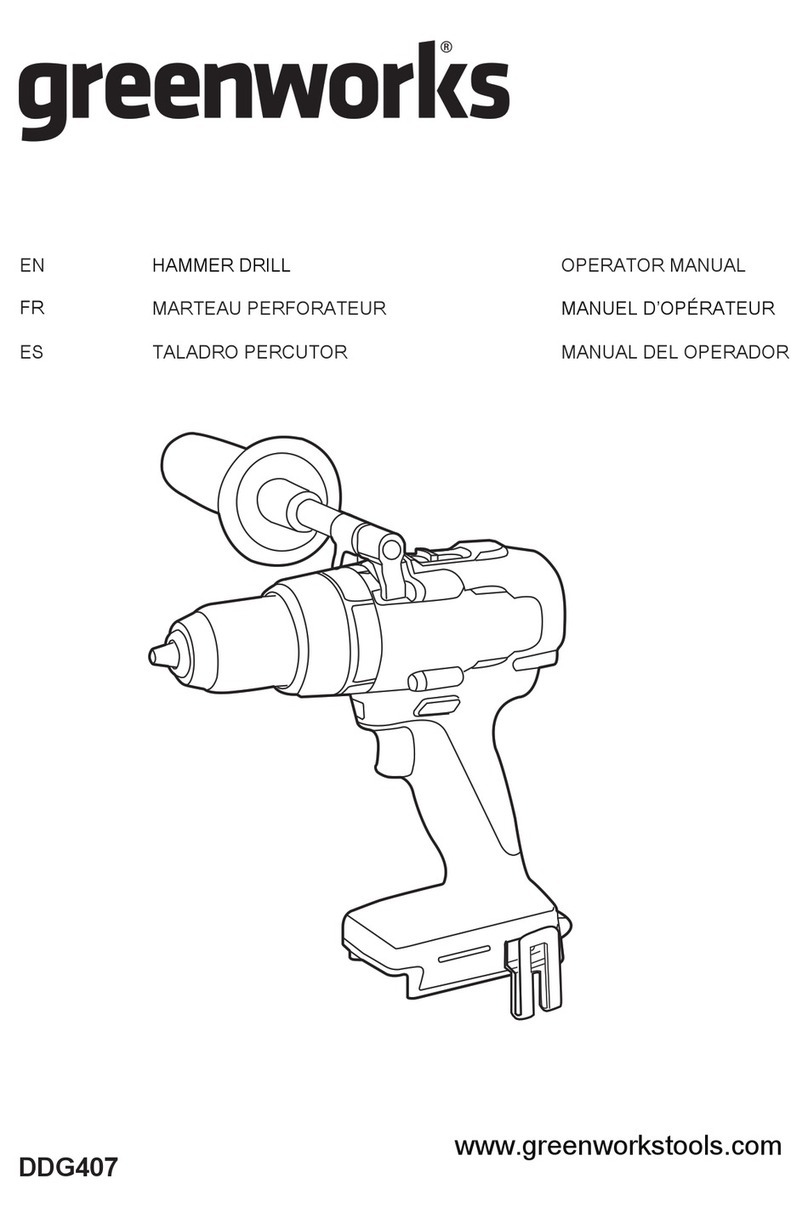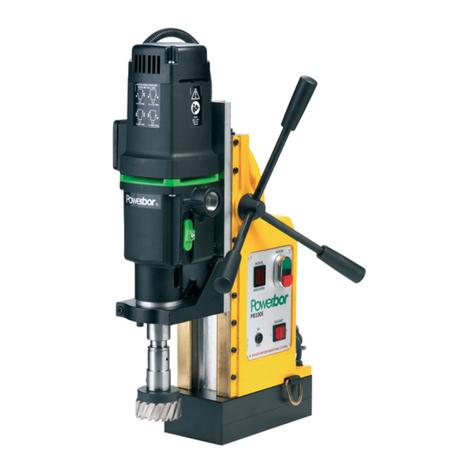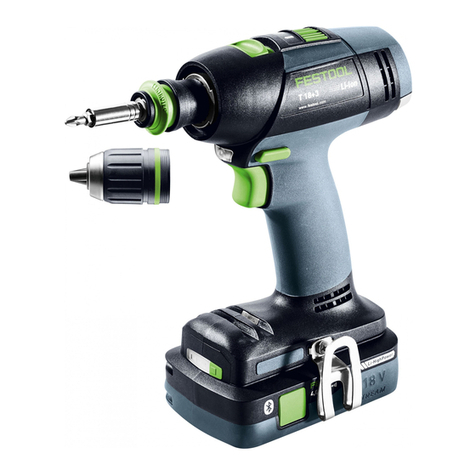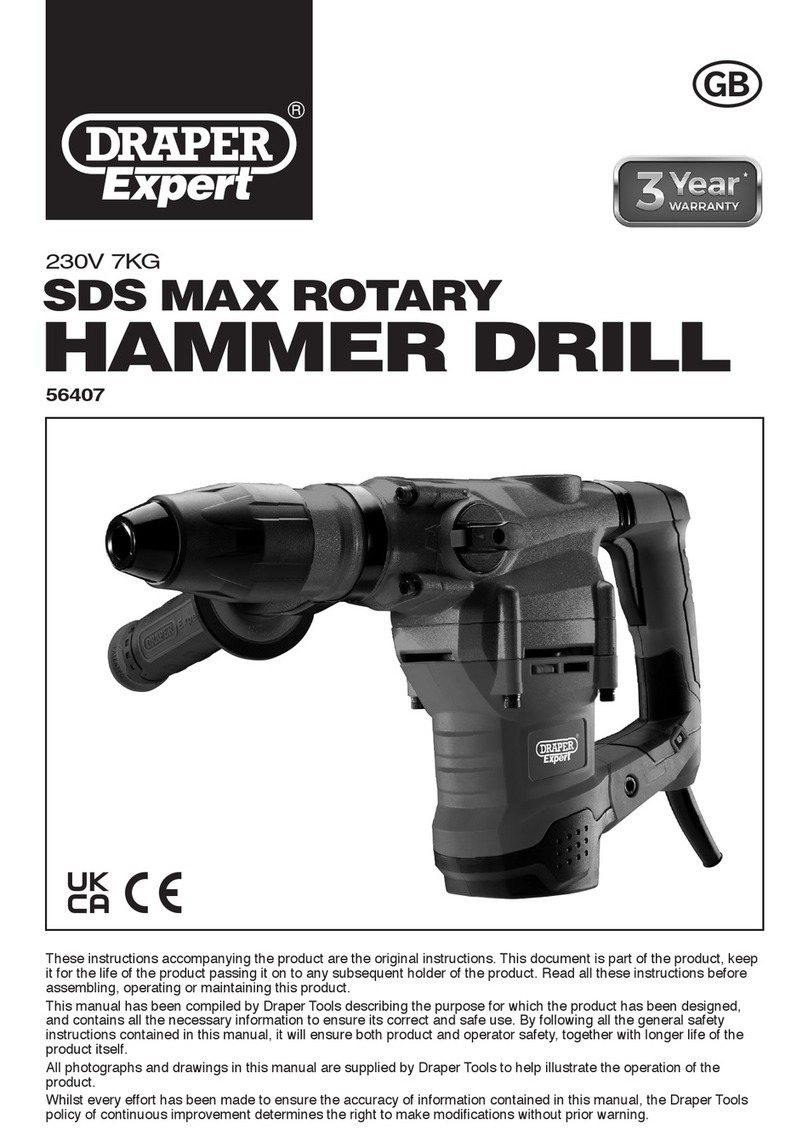
7
To start the tool, simply pull the switch trigger. Tool speed
is increased by increasing pressure on the switch trigger.
Release the switch trigger to stop.
Lighting up the front lamp
Fig.4
CAUTION:
• Do not look in the light or see the source of light
directly.
Pull the switch trigger to light up the lamp. The lamp keeps
on lighting while the switch trigger is being pulled. The
lamp goes out 10 -15 seconds after releasing the trigger.
NOTE:
• Use a dry cloth to wipe the dirt off the lens of lamp.
Be careful not to scratch the lens of lamp, or it may
lower the illumination.
Reversing switch action
Fig.5
This tool has a reversing switch to change the direction of
rotation. Depress the reversing switch lever from the A
side for clockwise rotation or from the B side for
counterclockwise rotation.
When the reversing switch lever is in the neutral position,
the switch trigger cannot be pulled.
CAUTION:
• Always check the direction of rotation before
operation.
• Use the reversing switch only after the tool comes
to a complete stop. Changing the direction of
rotation before the tool stops may damage the tool.
• When not operating the tool, always set the
reversing switch lever to the neutral position.
Speed change
Fig.6
To change the speed, first switch off the tool and then
slide the speed change lever to the "2" side for high
speed or, "1" side for low speed. Be sure that the speed
change lever is set to the correct position before
operation. Use the right speed for your job.
CAUTION:
•
Always set the speed change lever fully to the
correct position. If you operate the tool with the
speed change lever positioned halfway between the
"1" side and , "2" side, the tool may be damaged.
• Do not use the speed change lever while the tool is
running. The tool may be damaged.
Selecting action mode
Fig.7
This tool has an action mode change lever. For drilling,
slide the action mode change lever to the left ( symbol).
For screwing, slide the action mode change lever to the
right ( symbol).
NOTE:
• When changing the position from " " to " ", it
may be a little difficult to slide the mode change
lever. At this time, switch on and run the tool for a
second at the " " position, then stop the tool and
slide to your desired position.
CAUTION:
• Always slide the action mode change lever all the
way to your desired mode position. If you operate
the tool with the lever positioned halfway between
the mode symbols, the tool may be damaged.
• Do not use the action mode change lever while the
tool is running. The tool may be damaged.
Adjusting the fastening torque
Fig.8
The fastening torque can be adjusted in 16 steps by
turning the adjusting ring so that its graduations are
aligned with the pointer on the tool body.
First, slide the action mode change lever to the position
of symbol.
The fastening torque is minimum when the number 1 is
aligned with the pointer, and maximum when the marking
is aligned with the pointer. The clutch will slip at various
torque levels when set at the number 1 to 16. Before
actual operation, drive a trial screw into your material or a
piece of duplicate material to determine which torque
level is required for a particular application.
NOTE:
• The adjusting ring does not lock when the pointer is
positioned only halfway between the graduations.
ASSEMBLY
CAUTION:
• Always be sure that the tool is switched off and the
battery cartridge is removed before carrying out
any work on the tool.
Installing side grip (auxiliary handle)
Fig.9
Always use the side grip to ensure operating safety.
Insert the side grip so that the protrusions on the grip
base and steel band fit in between the grooves on the
tool barrel. Then tighten the grip by turning clockwise.
Installing or removing driver bit or drill bit
Fig.10
Turn the sleeve counterclockwise to open the chuck jaws.
Place the bit in the chuck as far as it will go. Turn the
sleeve clockwise to tighten the chuck. To remove the bit,
turn the sleeve counterclockwise.
